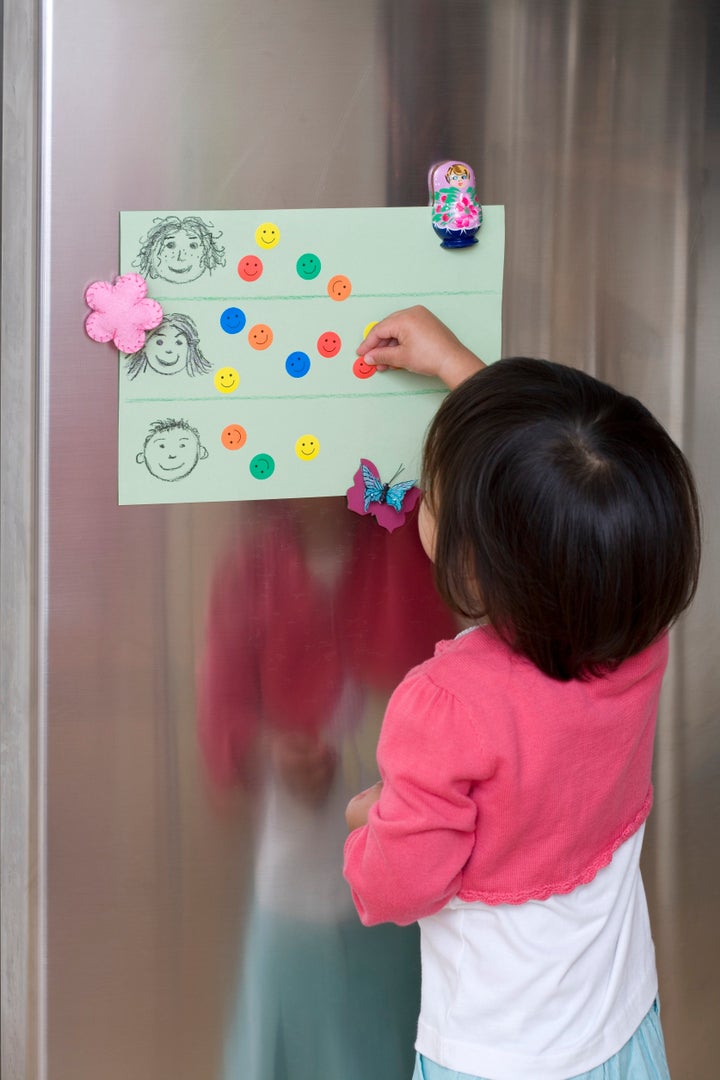
There are lots of techniques parents use to manage and maintain good behaviour at home – and one of those is reward charts.
We’ve spoken to parents and experts, as well as scouring the internet for advice to give you an ultimate guide to creating one, and making it work. Good luck!
How to make a reward chart:
Mums on Mumsnet have previously shared ideas on how to make a reward chart at home. Parents usually use a chart to either add stars on to when their child has displayed good behaviour or when they have completed set chores such as making their bed or tidying their room. Here are some options:
Fridge and magnets: Draw out the days of the week on an A3 piece of paper and stick it on the fridge. Buy a set of small fridge magnets (these would work) and when a task is completed or you want to reward your child for good behaviour, add a magnet to that day.
Stickers or drawings: Similar to the above, but rather than using magnets, draw out a chart on paper and get stickers and coloured pens to mark when your child has been good or completed a task. The downside to this is that you’ll have to keep making a new chart every week.
Reward box: Get a shoebox or a jar and a set of objects (such as a bag of balls or marbles) and get your child to add an object to the box for each reward.
Get a ready-made template: Although this restricts you in personalising it to suit your family. They can be picked up for a few quid online, like this one here.

Counselling Directory member Simon Mathias, a psychotherapist who specialises in child behaviour, told HuffPost UK reward charts have grown in popularity over the years because they provide a clear and visible way of showing what needs to be done and the progress achieved.
“This acts as a helpful reminder and record of progress to children and parents,” he says. But it’s important you use them well.
Tips on using a reward chart:
Make sure your child is the right age for it.
Mathias says these charts are most useful when the child is younger; usually with the age range of three to 12 years old.
Work with your child to decide on tasks and rewards.
“When using a chart the parent and child should decide together what is required to be done, for how long this behaviour should go on for and what reward should be given,” said Mathias. “It is best to have a few tasks rather than a long list.”
Also, make sure your child knows what goal they are working towards. If they do all their chores and get five stars, does that mean a trip to their favourite shop in town? Do they have to get a certain number of stars a day? Sit down with them and draw up a set of “rules” so you’re both clear on what the chart will achieve.
Try avoiding sugary treats as a reward.
Jo Frost a.k.a Supernanny advises avoiding chocolate and cakes as a reward for good behaviour, “Outings are the best (and healthiest) option,” she said. They don’t have to be expensive, it could just be a trip out to their favourite park, or to go and see a film at the cinema.
Don’t remove rewards as a means of punishment.
If your child misbehaves, discipline them in a way you would normally, rather than using the reward chart in a negative way. “Your child has achieved the rewards for acceptable behaviour,” explained Action for Children. “If their behaviour is unacceptable then you should give them a suitable consequence.” If a child carries on misbehaving, they are less likely to get stars on their chart, meaning they will miss out on an overall reward.

Don’t bribe them.
There’s a big difference between rewards and bribes. The NHS states you can help your child learn by rewarding them for behaving well. For example, praise them or give them their favourite food for tea. But don’t give your child a reward before they’ve done what they were asked to do. “That’s a bribe, not a reward,” they state.
Discuss and review the reward chart regularly with your child.
Some weeks, you might want to change the desired goals or chores your child is going to complete. Sitting down and reviewing the chart is a “great opportunity for you to offer praise and further encouragement,” advises Action for Children.
Make sure it works for your family.
Every family will do a reward chart differently. You might only use stars that correspond to good behaviour AND completing chores. Or you might have different stickers for different types of good behaviour. Either way, it’s down to you and your family to decide how it’ll best work for you.
Do you use a reward chart with your kids? What tips can you share? Get involved in the conversation on Facebook.